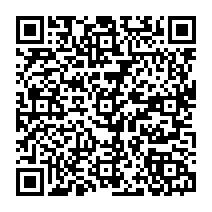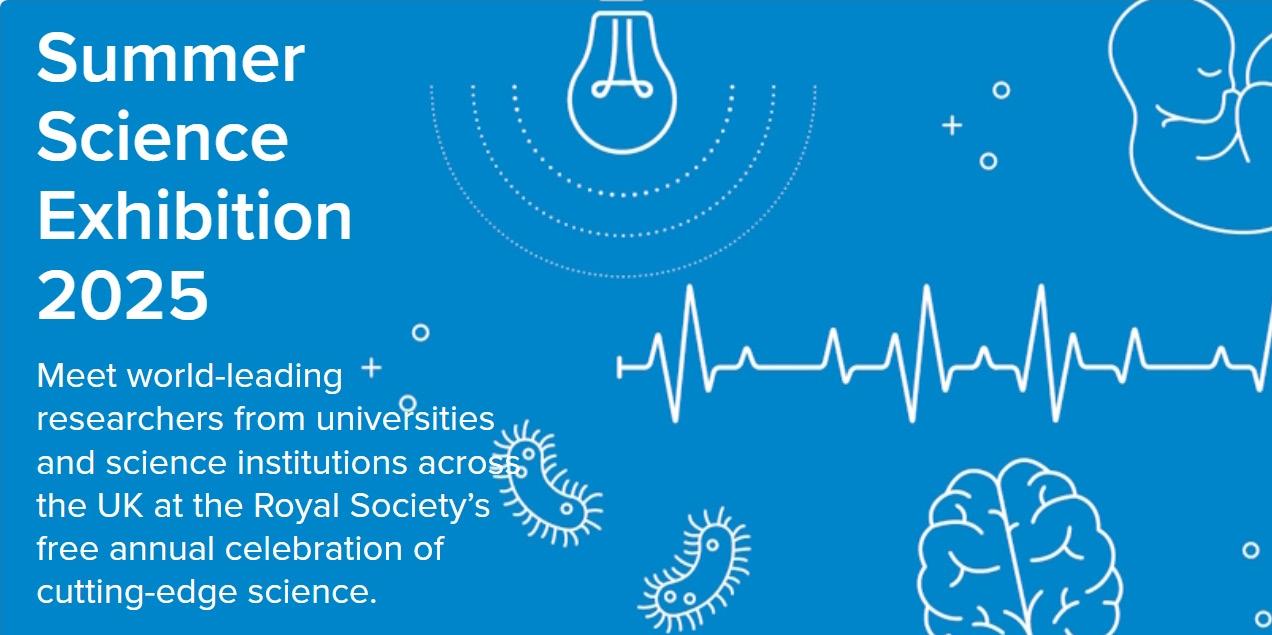The Shape and Size of the Universe











▶ Credit: Pixabay
The US Centers for Disease Control and Prevention (CDC) reports a significant increase in cases of tularemia, also known as ‘rabbit fever,’ across the United States over the past decade.
Tularemia, caused by the bacterium Francisella tularensis, can spread to humans through various means, including bites from infected ticks and deer flies or direct contact with infected rabbits, hares, and rodents, which are highly vulnerable to the disease.
More unusual transmission routes also exist: mowing over nests of infected animals can aerosolize the bacteria, potentially infecting unsuspecting gardeners.
This was first documented at a Massachusetts vineyard in 2000, where a tularemia outbreak persisted for six months, leading to 15 confirmed cases and one reported


death.
At least one of several cases reported in Colorado during 2014 and 2015 was also tied to a lawn-mowing incident.
The CDC closely monitors Francisella tularensis due to its classification as a Tier 1 Select Agent by the US government, highlighting its potential use in bioterrorism. Additionally, the disease can be fatal if left untreated.
“Tularemia’s case fatality rate is typically below 2 percent but can be higher depending on the clinical presentation and infecting strain,” the report’s authors explain.
Tularemia remains relatively rare: from 2011 to 2022, 2,462 cases were recorded across 47 states. In comparison, the CDC estimates approximately 1.35 million cases of Salmonella poisoning occur annually in the US.
While the tularemia rate
translates to roughly one case per 200,000 people, it marks a 56 percent increase from 2001-2010.
This rise may partly reflect improvements in case recording. Starting in 2017, the CDC included cases where F. tularensis was detected via polymerase chain reaction (PCR) in the “probable case” category, which previously required both symptoms and specific molecular markers suggesting the bacteria’s presence.
For a tularemia case to be classified as “confirmed,” either the bacteria must be isolated from the patient’s body, or a significant change in antibody levels must be detected through serum testing.
Between 2011 and 2022, 984 cases were confirmed, while 1,475 were classified as probable, accounting for 60 percent of all cases. This marks a significant increase from 2001-2010, when only 35 percent of cases fell into the probable category.
“Increased reporting of probable cases might reflect an actual rise in human infections, improved detection of tularemia, or both,” the CDC team explains. Variations in commercially available laboratory tests during this period may also have influenced the data.
The incidence rate among individuals categorized by the CDC as “American Indian or Alaska Native” was approximately five times higher than that observed among White individuals.
“Several factors may contribute to the increased risk of tularemia in this population, including the concentration of Native American reservations in central states and sociocultural or occupational activities that heighten exposure to infected wildlife or arthropods,” the report’s authors note.
Other groups most affected by the disease include children aged five to nine, men aged 65 to 84, and individuals living in the central United States.
Diagnosing tularemia is challenging due to its highly variable symptoms, which depend on the transmission route. However, greater awareness of these transmission methods can reduce exposure risks and help doctors promptly recognize and treat the disease with antibiotics.
Scientists have recently developed and captured images of a new magPage.
netic substance called altermagnetic material. Unlike some discoveries that take decades to materialize after being theorized, altermagnetism has quickly gained attention in the scientific community. In a new paper published in the peer-reviewed journal Nature, researchers demonstrate their ability to precisely tune these materials to create specific magnetism directions.
materials (a term meaning “guiding iron“) operate by exerting a force on nearby objects made of iron or other magnetic elements and alloys. In contrast, antiferromagnetism describes how magnets interact subtly and almost imperceptibly with materials that don’t contain iron.
Electromagnets—created by passing an electrical current through a coiled wire—function in a similar manner but

They’ve even confirmed a bold yet well-supported theory—that altermagnetism could merge ferromagnetism with antiferromagnetism, traditionally considered opposing forces. While this discovery may not affect everyday items like refrigerator magnets, it could be a breakthrough for those working on superconductors and topological materials at near-absolute zero temperatures, marking a significant advancement in these fields.
Standard ferromagnetic

with greater strength, relying on the electrical current. The Earth’s magnetic field, for instance, is partly due to its rotating, molten metal core, which behaves like an electromagnet.
In an altermagnet, however, the direction of spin— which determines magnetism— can shift across the “grid” created by an ideal crystal. This is a material with perfectly organized crystal patterns, free from faults, directional changes, or other natural imperfections. For instance, many natural diamonds are ideal crystals, which contributes to their excep-
tional clarity. Metals can also form ideal crystals.
In this experiment, the scientists employed polarized photoemission electron microscopy (PEEM) to reveal magnetic influences, mapping the entire grid structure of crystalline manganese telluride (MnTe). Their visual representation displayed the underlying crystal structure, with arrows on the grid indicating the magnetism directions at each point. The researchers were also able to manipulate the magnetic spin points.
Earlier this year, researchers presented the first experimental evidence of altermagnetism, but without capturing the material in such detail.
In that study, they used a momentum microscope focused on a specific area above the material to observe how its electrons were spinning, which is crucial to understanding magnetism. This latest work represents a significant step forward in imaging altermagnets in action.
Nanomaterials are of great interest across many research fields. Quantum computers operate at this scale, though they are still far from being practical outside of highly controlled lab environments.
Altermagnetic materials may also revolutionize spintronics, the study and optimization of solid-state devices—including solid-state drives (SSDs) in computers and smartphones—that utilize electron spin. While traditional ferromagnets serve their purpose, they aren’t perfect and can cause crosstalk, blurring separated bits of data.
On the nanoscale, everything we store in our devices depends on the coordinated movement of electrons. If these materials can be improved, it could lead to higher efficiency, increased storage capacity within the same space, and reduced data loss during access. Additionally, as the scientists note in their paper, altermagnets could advance the development of practical superconductors and topological materials.
In 1972, when a pregnant woman’s blood was tested, doctors found it was unusually lacking a surface molecule present on all other known red blood cells at that time.
After 50 years, the mystery of the missing molecular marker led researchers from the UK and Israel to identify a new blood group system in humans. In September, the team published
their findings on the discovery.
foreign entities.
If these markers don’t

▶ Credit: Pixabay
“This represents a significant achievement and the result of years of teamwork to establish this new blood group system, allowing us to provide the best care for rare but important patients,” said UK National Health Service hematologist Louise Tilley, who spent nearly two decades researching this peculiar case.
While many are familiar with the ABO blood group system and the rhesus factor (the positive or negative designation), humans actually have several different blood group systems, defined by the diverse range of cell-surface proteins and sugars that coat our red blood cells.
These antigen molecules, among other functions, serve as markers to help the body distinguish between ‘self’ and potentially harmful

align during a blood transfusion, it can lead to adverse reactions or even be life-threatening.
Most major blood groups were identified in the early 20th century. Many more recently discovered groups, such as the Er blood system identified by researchers in 2022, affect only a small population. The newly identified blood group follows this trend.
“The research was challenging because the genetic cases are extremely rare,” Tilley explained.
Earlier research revealed that over 99.9 percent of people have the AnWj antigen, which was absent in the 1972 patient’s blood. This antigen is present on a myelin and lymphocyte protein, prompting the researchers to name the newly identified system the
MAL blood group.
When someone inherits mutated versions of both copies of their MAL genes, they develop an AnWj-negative blood type, as seen in the pregnant patient. Tilley and her team discovered three patients with this rare blood type who didn’t have the mutation, indicating that blood disorders could sometimes cause the antigen to be suppressed.
“MAL is a very small protein with unique properties, making it difficult to identify. This complexity required us to explore multiple research avenues to gather the evidence needed to establish this blood group system,” said Tim Satchwell, a cell biologist from the University of the West of England.
After years of research, the team confirmed the correct gene by inserting the normal MAL gene into AnWj-negative blood cells, which successfully introduced the AnWj antigen to those cells.
The MAL protein is crucial for maintaining cell membrane stability and assisting with cell transport. Additionally, previous studies showed that the AnWj antigen is absent in newborns but appears shortly after birth.
Interestingly, all the AnWj-negative patients
in the study shared the same mutation. However, no other cell abnormalities or diseases were linked to this mutation.
With the genetic markers for the MAL mutation now identified, patients can be tested to determine whether their negative MAL blood type is inherited or a result of suppression, which could indicate an underlying health issue.
These rare blood abnormalities can have serious consequences for patients, so the more we learn about them, the more lives we can potentially save.
A powerful winter storm struck the United States on Sunday, with meteorologists alerting millions in the East to blizzard conditions and forecasting the heaviest snowfall in a decade for some areas.
Over 60 million people are in the path of the severe storm, which is expected to bring Arctic air and a deep freeze to the eastern United States through Monday, causing significant travel disruptions.
The National Weather Service (NWS) issued warnings for ice, snow, and strong winds in states from the Central Plains to the Mid-Atlantic.

▶ Credit: Depositphotos
Winter storm warnings have been issued across a wide 1,500-mile (2,400-kilometer) stretch, from western Kansas to the coastal states of Maryland, Delaware, and Virginia, with many areas under immediate threat.
Expected Across Central Plains to Mid-Atlantic
The National Weather Service (NWS) earlier warned of a “disruptive winter storm” affecting the Central Plains to the Mid-Atlantic through Monday, with widespread heavy snow and damaging ice accumulation.
In its latest Sunday report, the Weather Prediction Center noted that the storm would bring heavy snowfall and wind gusts over 40 mph (64 kph) to parts of Kansas and Missouri.
Snowfall totals are expected to exceed 15 inches (38 centimeters), marking “the heaviest in a decade,” according to the agency.
Scientists attribute the

increasing frequency and severity of extreme weather events to human-induced climate change.
The first major storm of 2025 has already caused significant travel disruptions, with Kansas City International Airport closing its flight operations on Saturday due to “rapid ice accumulation.”
Operations resumed later after airfield runways and taxiways were treated, as stated by Kansas City Mayor Quinton Lucas on social media.
Parts of eastern New York and Pennsylvania are facing “heavy lake-effect snow” from the Great Lakes, with accumulations of up to two feet (61 cm) expected, according to the NWS.
AccuWeather reported on Saturday that the total lake-effect snow in the region, which had already been covered in snow this week, could exceed four feet.
A blizzard is set to strike the Central Plains by
early Sunday, with the NWS warning of “whiteout conditions” that will make travel extremely dangerous, leading to impassable roads and a high risk of motorists getting stranded.
Washington, D.C., could see up to five inches of snow, with some nearby areas possibly receiving as much as 10 inches.
As the jet stream moves southward, temperatures are expected to drop, potentially falling below zero degrees Fahrenheit (-18 degrees Celsius) in some places, with strong wind gusts increasing the risks.
Temperatures could plummet well below seasonal averages, even reaching the US Gulf Coast. Before this, severe thunderstorms are anticipated across the lower Mississippi Valley, according to the NWS.
Freezing rain and sleet are also expected to affect areas from Kansas to Kentucky and Virginia, leading to thick ice accumulation on roads, which will make travel hazardous, bring down trees and power lines, and possibly leave millions without electricity during the cold snap.
The NWS warned of widespread tree damage and “long-lasting power outages” from Kansas to the central Appalachian Mountains.
Conditions could be particularly dangerous in the Appalachians, where a deadly hurricane in late September caused widespread destruction across several southeastern states, including Kentucky, and many communities are still recovering.
Governor Andy Beshear warned at an emergency meeting that the new storm “is likely to cause major disruptions and dangerous road conditions, as well as significant power outages, just 24 hours before extremely cold temperatures hit Kentucky.”
The governors of Kentucky, Missouri, and Virginia have declared states of emergency in their respective states and used social media to alert residents about the hazardous weather expected this weekend.
A Chinese automaker is once again setting new standards for innovation. This time, it’s the Shanghai-based electric vehicle company Nio, renowned for its battery swap and autonomous technology, that’s grabbing attention.
Nio has introduced its new Firefly brand, unveiling its flagship battery electric vehicle
(BEV). The upcoming EV is expected to feature removable batteries and autonomous parking capabilities.
The trunk can hold up to 1,250 liters (330 gallons) when the rear seat backs are folded down.

disclosed technical details about the new EV’s drive system, so the exact size of the batteries remains unknown. However, it’s clear that these are not the familiar Nio and Onvo 75- and 100-kWh battery packs, as their size would be too large for the compact dimensions of the BEV.
The Firefly is designed to meet the five-star Euro NCAP crash test standards, but no additional technical information has been revealed.
to Li, the company is working on establishing battery-swapping stations across Europe, which would save both time and money.
The cost of setting up these battery swapping stations for the Firefly EV is expected to be onethird of the cost for Nio’s other vehicles in Europe. With global EV growth slowing this year due to infrastructure challenges, addressing these issues ahead of Firefly’s European launch is a strategic move.
The vehicle is designed to compete with super-compacts like the MINI Cooper and Mercedes-Benz smart cars. As CEO William Li mentioned at the company’s annual event in Guangzhou, “We are building the Firefly car to be smarter than the Mini and more Mini than smart cars.”
The car certainly has a charming design, and there are speculations that a battery-as-a-service (BaaS) rental program may be available when it officially launches.
With its three circular headlights and taillights, the small, curved fivedoor Firefly resembles the Honda e. It also features a glass roof and a frunk behind the engine offering an extra 92 liters (24.3 gallons) of storage.

The BEV was unveiled in three colors: lavender, lemon, and beige. It promises a relatively spacious interior while maintaining a tight 4.7-meter (15-foot) turning radius, ensuring excellent maneuverability. “Firefly is highly competitive because it incorporates genuine smart EV technologies, which Nio has been developing over the last decade. We are confident in its competitiveness,” said Li.
In terms of competition, Mercedes’ smart #1 is priced at ¥154,900 (US$21,221) in China, while BMW’s all-electric Mini starts at ¥148,800 (US$20,394). In comparison, the new BEV will have a starting price of ¥148,800 (US$20,394).
The company has not
Nio originally stated that Firefly was intended to be offered internationally in an affordable package. To fulfill this promise, Firefly plans to partner with regional collaborators, especially for its upcoming launch in the European market.
While Nio has long aimed to expand its presence in Europe, recent European Commission taxes on Chinese-made EVs have affected these plans. Li acknowledged that these tariffs will “definitely have” an impact on Firefly’s European launch, noting that without the tariffs, the vehicle would have had a stronger chance in the market.
Nio is not only relying on its electric vehicle but is also investing in the necessary infrastructure to facilitate its adoption in the West. According
When the Firefly is ready, it will be available for order through the Firefly app. The BEV is expected to launch in China in April 2025, followed shortly by its introduction in Europe. Li also mentioned that Firefly will be sold in Europe through local retail partners.
As Earth completes another orbit around the Sun, a storm brewing in space may soon illuminate our skies with a breathtaking display of auroras.
On December 29 and 30, the Sun unleashed a series of dramatic events, including massive eruptions, powerful flares, and coronal mass ejections (CMEs), potenPage. 7
tially aimed in Earth’s direction.
Amid these major flares, smaller ones erupted

Within just eight minutes of these eruptions, the flash of electromagnetic radiation caused brief radio blackouts on Earth’s dayside. Meanwhile, CMEs—enormous bursts of plasma—traveled more slowly, taking hours to days to spread across the Solar System.
When CMEs collide with Earth’s magnetic field, they trigger geomagnetic storms. The most captivating result of these storms is the vibrant auroras that light up the skies near the planet’s poles.
frequently. For example, December 29 saw 18 M-class flares, which rank as the second most powerful category.
However, the CMEs added another layer of complexity. Although CMEs often coincide with flares, the CME most likely responsible for a geomagnetic storm on December 31 actually occurred an hour before the first flare on December 29. Later that day, a second, smaller CME was detected, suggesting the potential for a milder geomagnetic storm on January 1.
these CMEs originated on the Sun’s side facing Earth. They may have erupted from the far side, in which case they won’t reach us at all.
In a way, this uncertainty feels fitting. What better way to close the year than with a cosmic prank played by the Sun?
cent mortality data from a broader population of smokers, researchers now provide a more precise prediction of the impact smoking has on life expectancy.
The team aimed to update these figures to provide smokers with a clear and impactful understanding of the habit’s dangers, which include significantly increased risks of lung cancer, brain damage, and other severe health conditions.
“Effectively commu-

29-30, 2024
The three key eruptions occurred on December 29 and 30, 2024 (UTC). On the 29th, sunspot region AR 3936 released an X1.1 flare, categorized as an X-class flare—the most intense type. The following day, this same region produced an even stronger X1.5 flare, followed shortly by an X1.1 flare from sunspot region AR 3932.

The NOAA has issued a warning for a strong geomagnetic storm, but uncertainties remain. Neither CME is expected to directly strike Earth, complicating predictions.
Adding to the mystery, SpaceWeatherLive highlights that existing data leaves it unclear whether
Here’s a powerful perspective to motivate yourself or others to quit smoking: each cigarette smoked reduces life expectancy by an estimated 20 minutes, according to researchers. Quitting for just a week could extend your life by an entire day.
This updated metric, calculated by researchers from University College London (UCL), builds on a 2000 study that estimated each cigarette reduced life by 11 minutes. With access to more re-
nicating the harms of smoking in a way that resonates with smokers is challenging,” the researchers explain in their study. “One impactful approach is to calculate the average loss of life expectancy for each cigarette smoked.”
While the 20-minute estimate is a generalization—since factors like inhalation depth and existing medical conditions vary among
individuals—it offers a compelling shorthand for understanding how each cigarette harms the body. Moreover, the benefits of quitting compound over time.
“Epidemiological data show that the damage caused by smoking accumulates, but quitting at any time and reducing the number of cigarettes smoked will increase life expectancy,” the researchers note.
For example, someone who smokes 10 cigarettes a day and quits on January 1, 2025, could save one day of life by January 8, a week by February 20, and a month by August 5. By the end of the year, they could avoid losing 50 days of life.
Lifespan Reduction
In the UK, where the study data originates, smoking shortens lifespan by an average of 10 years for men and 11 years for women. It remains the leading preventable cause of death, disability, and ill health, as it is in many other countries.
The researchers stress that cutting back is not enough; quitting entirely is the only way to eliminate the increased health risks associated with smoking. The benefits of quitting extend to smokers of all ages and durations.
“Stopping smoking at any age is beneficial, but the sooner smokers step off this escalator of death, the longer and healthier their lives can be,” the researchers conclude.
vived Historic Sun Encounter
the probe entered an unprecedented orbit, not only bringing it closer to the Sun than any previous spacecraft but also making it the fastest human-made object ever, reaching a staggering speed of 430,000 mph (692,000 km/h).
This mission aims to deepen our understanding of the Sun’s behavior and structure. Remarkably, the probe

The Parker Solar Probe has been confirmed by NASA to be safe and fully functional following a groundbreaking close approach to the Sun on December 24, 2024. During this event, the spacecraft set a record, venturing to within just 3.8 million miles (6.1 million kilometers) of the Sun’s surface.
Venus Flybys and Unprecedented Speed
Launched in 2018, the Parker Solar Probe has been leveraging gravity assists from Venus to progressively adjust its orbit closer to the Sun. Following its final Venus flyby in November 2024,

in Maryland, faced tense moments as the probe entered the solar corona. Intense heat and solar plasma temporarily disrupted communication with Earth. Relief came on December 26, when a beacon signal confirmed that the probe was still operational. By January 1, 2024, Parker transmitted detailed telemetry data to Earth after moving far enough from the Sun, and it is expected to provide a full account of its close encounter soon.
has ventured into the Sun’s outer atmosphere, known as the corona—a hostile environment with temperatures exceeding 1 million °F (555,000 °C). Despite these extremes, the spacecraft remains intact, thanks to its innovative foam carbon heat shield, which can endure temperatures up to 2,600 °F (1,400 °C). The shield keeps the probe’s instruments at a stable, room-temperature level, enabling them to operate continuously.
The team at Mission Control, located at the Johns Hopkins Applied Physics Laboratory (APL)
NASA engineers confirmed that all systems are functioning correctly, allowing the mission to continue as planned. The Parker Solar Probe will complete four additional close approaches to the Sun this year. Once its fuel supply runs out, NASA will command it to fully expose itself to the Sun, causing its destruction.
The Parker Solar Probe is navigating one of the harshest environments in space and has surpassed all expectations, said Nour Rawafi, the project scientist for the mission at APL. This groundbreaking mission marks the dawn of a new era in space exploration, bringing us closer than ever to uncovering the Sun’s most profound and enduring mysteries.

▶ Credit: Pixabay
A new study reveals that the right therapy can significantly enhance the heart’s self-repair abilities after heart failure, potentially granting it regenerative powers that surpass those of a healthy heart.
According to an international team of researchers, this discovery could pave the way for treatments that enhance recovery in damaged hearts, though the exact reason behind the improved repair rates remains uncertain.
“The findings indicate there may be an untapped mechanism to activate the heart’s natural repair system,” says Olaf Bergmann, a molecular biologist at Sweden’s Karolinska Institute.
The study tracked recovery in 52 heart failure patients, including 28 who received a left ventricular assist device (LVAD), a surgically implanted device that aids blood

circulation.
Patients with advanced heart failure often rely on an LVAD for life or until a heart transplant becomes possible. In some cases, heart function improves so significantly that the device can be removed.
However, the exact mechanisms driving LVAD-supported recovery remain unclear, including whether new heart muscle cells, called cardiomyocytes, are formed during the process.
To monitor cardiomyocyte renewal, researchers analyzed the levels of radioactive carbon-14 (¹⁴C) within heart cells. Because atmospheric ¹⁴C levels have been steadily declining since nuclear testing was banned in 1963, its presence in cells
serves as a reliable indicator of their age.
Using mathematical models, the team calculated regeneration rates and discovered that in hearts affected by heart failure, the cardiomyocyte regeneration rate was 18 to 50 times lower than in a healthy heart.
The researchers discovered that with an LVAD implanted, heart cells regenerated at a rate at least six times faster than in a healthy heart, in addition to the device’s known benefits of improving heart function and structure.
The remarkable repair abilities observed in LVAD-supported hearts are promising, but further research is needed to uncover the mechanisms behind this effect before new treatments or drugs can be developed.
“We haven’t yet identified the cause of this phenomenon in the current data, but we plan to investigate it further at the cellular and molecular levels,” says Bergmann.
Enhancing the heart’s natural self-healing processes offers a simpler and more natural alternative to approaches like transplanting cells from other parts of the body.
While restoring a damaged heart to near full functionality remains a significant challenge, progress continues.
Researchers are advancing techniques to grow heart tissue in the lab and exploring the biological mechanisms behind the heart’s natural repair attempts. Recent efforts also focus on encouraging heart cells to behave more like stem cells during repair. This latest finding adds another promising avenue for exploration.
“This provides hope that recovery following a heart incident could potentially be enhanced,” says Bergmann.

HS720G: GPS Drone with Camera for Stable and Clear Footage by Holy Stone on Gadget Flow
Fly higher with the Holy Stone HS720G GPS drone with camera.

Crystal Light: High-End PCVR Headset with 2880 x 2880 Per Eye by Pimax on Gadget Flow
Step into unparalleled VR realism with the Pimax Crystal Light, an industry-leading PCVR headset delivering breathtaking visuals! Buy

Omni One: VR Gaming System with Complete Freedom of Movement by Virtuix on Gadget Flow
The Virtuix Omni One Core revolutionizes virtual reality by letting you physically move through your favorite SteamVR games.

Climate change is shifting the Antarctic Circumpolar Current (ACC) and westerly winds, releasing more carbon from the Southern Ocean, as seen in past ice ages. A Cardiff University study in Science Advances highlights the Southern Ocean’s role in absorbing 40% of global CO2 emissions, stressing urgent climate action.
Researchers connected ACC changes to Antarctic Ice Sheet retreat, exposing feedback loops with global effects. Ongoing ice loss may disrupt ocean circulation, worsening heat and carbon dynamics and speeding up climate change.

The future of the EU’s ambitious Green Agenda?
The EU’s climate leadership has waned, with sustainability goals overshadowed by energy security and economic competitiveness. The European Green Deal’s implementation faces challenges from geopolitical shifts, such as Russia’s 2022 invasion, and a right-wing parliamentary majority prioritizing deregulation. Policies like the EU-Mercosur Trade Agreement and delays in environmental regulations further undermine green objectives.
Public support for climate action persists, with 52% of Europeans considering it a priority. However, concerns about fair burden-sharing remain. By bolstering measures like the Just Transition Fund and advancing renewable energy, the EU can reignite its global role in sustainable development.
New York to impose $75B charge on fossil fuel companies under climate law
New York’s Climate Change Superfund Act imposes a $75 billion levy on oil and gas companies for emissions between 2000 and 2018, funding infrastructure upgrades and climate mitigation. Senator Liz Krueger said the polluter-pays model ensures accountability, while economists like Joseph Stiglitz argue it won’t affect consumer prices.

Forests could be more climate-resilient than expected
Forests may better withstand climate change than expected. Research in Nature Ecology and Evolution shows plant root activity offsets soil carbon loss caused by rising temperatures and nitrogen deposits, maintaining carbon levels. Advanced analysis by Myrna Simpson’s lab revealed how these stressors interact at a molecular level.

Simpson highlights the need for more data to predict climate change impacts on diverse ecosystems. Collaboration between experts is essential to understanding how forests respond to multiple stressors, ensuring strategies to mitigate climate change are both informed and effective.





Samsung debuts AI Hybrid Cooling refrigerators at CES 2025
Samsung’s AI Hybrid Cooling refrigerators, debuting at CES 2025, combine AI with advanced cooling methods for energy efficiency and food freshness. Using a Peltier module alongside a high-efficiency compressor, these refrigerators optimize cooling based on user needs, preserving food up to 1.4 times longer with features like Hybrid Precise Cooling.
With a 900-litre capacity and intelligent design, they maximize storage without increasing external dimensions. These innovative refrigerators highlight Samsung’s dedication to merging technology and convenience, setting new standards for AI-applied home appliances. Availability in Australia is yet to be confirmed.

AI and digital transformation are reshaping manufacturing by addressing key challenges and enabling long-term resilience. Technologies like GenAI, Robotics, and Cloud systems optimize processes, enhance safety, and improve efficiency, as demonstrated by a 30% reduction in safety incidents at an automotive manufacturer using AI-powered surveillance.
Success hinges on aligning technology with workforce needs and implementing a clear strategy. Manufacturers embracing AI and advanced systems can enhance operational resilience, improve quality, and achieve sustainable growth, setting the stage for a smarter, competitive future.





AI Revolution in Biotechnology: Innovations and Challenges
AI is transforming biotechnology, advancing drug discovery, diagnostics, and synthetic biology. Tools like AlphaFold and Tempus enhance treatments, while platforms like Arzeda optimize sustainability. The AI-biotech market is set to grow from $5.4 billion in 2024 to $26.3 billion by 2034.
AI-driven biotech faces IP hurdles, requiring clear documentation of human input for patents. Combining patents with trade secrets ensures innovation protection and competitiveness in this fast-evolving sector.
AI’s progress depends on deeper access to your digital life
Tech companies are pushing “AI agents” to automate tasks and revolutionize interactions with computers. These tools promise efficiency but come with security risks like data leaks and misinterpreted commands. OpenAI and others are working to improve reasoning and safeguard users.
While AI agents show promise in personal and workplace tasks, privacy concerns remain significant. Risks like data misuse and errors challenge adoption. Developers emphasize balancing innovation with safety to ensure AI agents transform lives without compromising trust or security.


‘Zero Escape’ creator says human devs outshine AI due to originality
Kotaro Uchikoshi, Zero Escape series creator, sees AI advancing game design but insists it cannot replace human creativity. Speaking at China’s WePlay expo, he showcased an AI-generated game while highlighting AI’s limitations, particularly in narrative depth and context.
He emphasized that originality, rooted in unique human experiences, remains the edge over AI. While AI may fuel indie game growth, large-scale productions requiring human collaboration will endure. Uchikoshi also warned about “Gishin Aiki,” the doubt over whether creations are AI-made, which could dampen excitement for new works.

Xbox and LG Join Forces to Bring Cloud Gaming to Smart TVs
Xbox has partnered with LG to bring the Xbox App to LG Smart TVs, enabling Game Pass Ultimate members to stream games via cloud gaming starting February 18. Players can use a Bluetooth controller to access Game Pass titles and stream over 50 owned games, including NBA 2K25 and Hogwarts Legacy.
This collaboration enhances player choice, offering direct access to games like Call of Duty: Black Ops 6 through LG’s Gaming Portal. Xbox remains committed to making gaming more accessible across devices, with more details on the LG TV experience to come. Visit xbox.com/cloudgaming for updates.

Image Credits: CES
CES 2025, happening January 7-10 in Las Vegas, unites over 4500 exhibitors and 1100 speakers. Key themes include AI, digital health, energy transition, and sustainability. Attendees can use the CES App and explore venues like LVCC’s halls for entertainment, mobility, and smart communities. Highlighted events feature NVIDIA CEO Jensen Huang, Delta Air Lines’ Sphere keynote, and the CES Creator Space for content innovators.
Crunchyroll reveals ‘Ghost of Tsushima’ adaptation, new manga app for subscribers
Image Credits: Crunchyroll
Crunchyroll is adapting Ghost of Tsushima into an anime series premiering in 2027. Collaborating with Aniplex, Sony Music, and PlayStation Productions, the series will feature Takanobu Mizuno as director and animation by Kamikaze Douga. The project aims to blend traditional samurai aesthetics with cinematic storytelling.


▶ Xinhua
China has given the green light to the construction of what will become the world’s largest hydropower dam, expected to generate nearly three times the electricity of the current record-holder, the Three Gorges Dam.
The dam is planned for the Yarlung Zangbo River in Tibet, near the Indian border, with an estimated cost of $137 billion. It is part of China’s 14th “Five-Year Plan,” which aims to boost renewable energy and combat pollution. The location takes advantage of the river’s steep terrain to harness an unprecedented amount of hydropower, generating up to 300 billion kilowatt-hours annually.
This energy output is equivalent to 300 terawatt-hours (TWh), enough to power 300 million people in China. Currently, the Three


Gorges Dam on the Yangtze River holds the world record for installed capacity and annual hydroelectric generation, producing between 95 and 112 TWh each year. If completed, the Yarlung Tsangpo Hydroelectric Project would surpass that output by almost three times.
For comparison, the largest hydroelectric plant in the U.S., the Grand Coulee Dam on the Columbia River in Washington, produces around 20 TWh annually.
The Hoover Dam, on the Nevada/Arizona border, generates just 4.2 TWh per year.
The Yarlung Zangbo River, which becomes the Brahmaputra River in India, is one of the highest rivers globally, originating from the Angsi Glacier in Tibet. The river is partially responsible for carving the Yarlung Tsangpo Grand Canyon, one of the deepest canyons on Earth, which
reaches 19,714 feet (6,009 meters) at its deepest point. The canyon spans 313.5 miles (504.6 km), making it longer than the Grand Canyon.
The Yarlung Zangbo River drops approximately 25,152 feet (7,667 meters) from its highest point to India, making it one of the richest rivers in the world for hydropower potential. A 31-mile (50 km) section near the Namcha Barwa mountain features a 6,562foot (2,000-meter) drop, which makes it an ideal site for a hydroelectric plant.
Building the dam at this location would require the construction of 12.5mile (20 km) tunnels to divert the river, which flows at a rate of 70,600 cubic feet per second (2,000 cubic meters)— enough to fill three Olympic swimming pools per second.
However, Indian officials have raised concerns about China controlling the river’s flow and the potential impacts downstream. Chinese authorities have conducted extensive geological studies of the seismically active area and are confident that they can complete the construction safely. They have not set a construction timeline yet.
By the end of this decade, nations and private companies could begin mining the Moon surface. As space becomes increasingly accessible, it’s essential to pause and consider what commercial activities should be allowed, especially on the Moon.
This is the moment to establish clear rules and regulations to protect humanity’s shared future in space. Proper governance will ensure the Moon remains a symbol of inspiration and exploration for generations to come.
NASA’s multibillion-dollar Artemis program aims to do more than return astronauts to the Moon—it seeks to pave the way for resource extraction. Similarly, China is charting a comparable path, sparking a new lunar race where private companies compete to extract and potentially sell the Moon’s resources back to governments, creating a cosmic supply chain.
Currently, all supplies for space exploration are shipped from Earth, making essentials like water and fuel astronomically expensive. By the time one liter of water reaches the Moon, it costs more than gold. However, converting the Moon’s water ice into hydrogen and oxygen for on-site refueling
could drastically reduce costs and make deeper space missions, such as journeys to Mars, more practical.
en as dust resettles. Even small-scale mining might create visible changes over time.
Effective dust manage-

▶ Credit: gremlin_Getty Images
In addition, the Moon contains rare Earth metals critical for technologies like smartphones. Mining these resources could ease the strain on Earth’s depleting reserves.
Notably, private companies might beat space agencies to lunar mining, with some startups potentially beginning operations before NASA sends its next astronaut to the Moon.
How We See the Moon from Earth?
Mining operations on the Moon could alter its appearance from Earth. When material is extracted, lunar dust is kicked up. Without an atmosphere to slow it down, this dust can travel significant distances.
This surface material, which has been “space weathered,” appears dull compared to the more reflective material beneath. Disturbing the dust could cause some areas to look brighter, while others may dark-

ment will be critical to minimizing disruptions and ensuring sustainable mining practices.
The 1967 Outer Space Treaty asserts that no nation can claim ownership of the Moon or any celestial body. However, the question of whether companies can extract lunar resources without violating this treaty remains unresolved.
Two subsequent agreements offer different interpretations. The 1979 Moon Treaty designates the Moon and its resources as the “common heritage of mankind,” often viewed as an explicit ban on commercial mining. In contrast, the 2020 Artemis Accords allow for mining while affirming the Outer Space Treaty’s rejection of territorial claims.
The Outer Space Treaty also emphasizes that space exploration should benefit all humanity, not just wealthy nations and corporations. Some argue that any future lunar mining efforts must
share their bounty equitably with all nations. What Would Miners’ Lives Be Like on the Moon?
Imagine working 12-hour shifts in harsh, isolating conditions. You’re exhausted, dehydrated, and surrounded by injured colleagues. With no alternative employment or recourse, you’re trapped in space under unsafe conditions.
This dystopian scenario underscores the importance of addressing the risks of lunar mining before operations begin.
Working in low gravity introduces serious health hazards, including:
• Bone and muscle loss
Osteoporosis
Kidney and cardiovascular damage
• Compromised immune systems
Cosmic radiation adds further risks, including increased cancer rates and potential fertility issues. Prolonged isolation and psychological stress would compound the challenges.
Robust regulations and guidelines are necessary to protect the health and well-being of space workers. Enforcement, however, presents a unique challenge. Regulatory bodies on Earth would be far removed, leaving miners vulnerable to exploitation and unsafe working conditions.
Astrobiologist Charles S. Cockell warns that space environments are “tyranny-prone,” where powerful individuals could exploit workers with little oversight or accountability.
The Moon holds immense potential as a resource hub and a stepping stone for human exploration. However, history has shown the devastating consequences of unchecked exploitation.
Before mining begins, humanity must prioritize fairness, safety, and human rights by establishing comprehensive regulations. By doing so, we can ensure the Moon’s resources are used responsibly, benefiting all of humanity without compromising the ideals of exploration and innovation.
lutions
Here’s What Scientists Recommend for 2025
Maybe you, like many others, started the year with big ambitions—a home spin bike or rowing machine, for instance. By March, however, the excitement likely waned, and by June, it may have become just another clothes rack.
You’re not alone. A rePage. 16
cent Gallup survey found that seven in ten adults plan to set goals for the coming year. According to Statista, the most common resolutions are health-related, such as improving diet and exercise habits, followed by financial goals like saving money. This explains the annual January surge in exercise equipment sales.
because it’s human nature to strive for self-improvement.
Unlike other animals, humans have a unique drive to set and pursue goals for a better future. Psychologist Abraham Maslow placed self-actualization—fulfilling one’s potential—at the pinnacle of human needs. Naturally, you want to become the fittest ver-

▶ Credit: Pixabay
However, research reveals that many resolutions don’t last. Within one week, 25% of people abandon their goals, and over half fail within six months. After two years, only 20% achieve success.
So why do we persist in making resolutions, often spending significant money, only to break them? More importantly, how can we stick with them and, perhaps, redeem that spin bike? Insights from behavioral science provide some answers.
Why We Try—and Why We Fail
You bought the spin bike
sion of yourself.
The challenge lies in the discipline regular exercise demands. When choosing between the comfort of the couch and the demands of the spin bike, our resolve often falters. Exercise is tough, and our brains are wired to conserve energy—a survival strategy that made sense in the Stone Age when food was scarce.
Modern conveniences, however, have flipped the script. Excessive energy intake and minimal expenditure often lead to habits that are counterproductive.
Leveraging Self-Regulation
Your spin bike, however, symbolizes hope. Despite our evolutionary tendencies, humans have a powerful ability to self-regulate. At our best, we can resist immediate temptations to focus on long-term goals.
Research highlights two critical components of self-regulation: monitoring your behavior and correcting it when necessary. You’ve already taken the first two steps—you set a goal and recognized your lapses. Now it’s time to implement corrections.
One way to overcome these challenges is through self-nudging— adjusting your environment and choices to make success more likely.
Take the “sunk cost fallacy,” for example. This cognitive bias leads us to value something more because we’ve already invested in it. Use this to your advantage: owning a spin bike might motivate you to work out more than relying on a gym membership, which is easily canceled.
Behavioral scientists also recommend the EAST framework: make desired actions Easy, Attractive, Social, and Timely:
• Easy: A home spin bike eliminates the need for packing gym gear, driving, and waiting for equipment.
• Timely: You can exercise whenever it fits your schedule without worrying about gym hours.
• Attractive: Pair your workout with something enjoyable, like watching TV. This “temptation bundling” helps make the experience more appealing.
• Social: Join an online community, compete on leaderboards, or follow interactive instructors to make the activity more engaging.
Should you try again in 2025? Absolutely.
The new year offers a natural reset, thanks to the fresh start effect. Psychologists have found that temporal landmarks, like birthdays or the start of a new year, help people mentally leave past failures behind and embrace a clean slate.
The end of the year is a powerful moment for change. But success requires more than good intentions—you need strategies to make your goals stick. With the right approach, your resolutions for 2025 could finally become lasting habits.
New Cadillac Escalade-V takes it’s place as GM’s most powerful petrol car ever with nearly 700 horsepower from the supercharged V8. The Official numbers come in at 682 hp and 653 lb-ft of torque thanks to a big 2.65L liquid-intercooled TVS supercharger which spins up to 13,500 rpm and delivers 10 pounds of boost.
Credit: Wsupercars





Nine Sols is a story-driven, hand-drawn 2D action-platformer game with Sekiro-inspired defense-based combat. Embark on a journey through Asian fantasy worlds, explore a land once ruled by an ancient alien race, and follow a vengeful hero on his quest to defeat the 9 Sols—the powerful rulers of this abandoned empire.
Term of the Week
Schnozzle
A slang term for the nose, often used in anatomy humor.







Unique Lamborghini concept priced at $117M
The Lamborghini Egoista is a one-off concept car created for Lamborghini’s 50th anniversary, featuring a $117 million price tag. Designed with a fighter jet-inspired single-seat cockpit, a 600-horsepower V10 engine, and active aerodynamic panels, it combines performance and innovation. Its “selfish” design keeps all the driving joy with the driver. Only one was ever made, and after being displayed at the Museo Lamborghini, it was sold to a private collector. The buyer reportedly paid $117 million for this exclusive, cutting-edge vehicle.

Nissan reveals X-Trail concepts at Tokyo Auto Salon 2025
Nissan will unveil two X-Trail concepts at the Tokyo Auto Salon 2025: the “Unwind” and “Remastered.” The “Unwind,” based on the X-Trail e-POWER, features a trailer-terrace design for outdoor luxury, while the “Remastered” revitalizes a previous-generation X-Trail, catering to analog music enthusiasts with a cozy, retro-inspired retreat.
These concepts reflect Nissan’s blend of innovation and nostalgia, showcasing its customization vision. Visitors can experience the models, designed for leisure and sustainability, at the Tokyo Auto Salon from January 10-12.

Honda Unveils 0 Series EV Prototypes at CES 2025
Honda debuted the prototypes of its 0 Series EVs at the 2025 Consumer Electronics Show, previewing the Honda 0 SUV and Honda 0 Saloon, which will enter production in 2026. Built in Ohio, these models embrace Honda’s new “thin, light, and wise” design and will feature the Asimo operating system for managing various vehicle functions. They will also support Level 3 autonomous driving and feature NACS charging ports.

Dodge M80: A Retro-Inspired Pickup That Could Revitalize the Brand in 2025
In 2025, Dodge could stand out with a retro-inspired model like the Dodge M80, a one-off pickup designed in 2002 to pay homage to the brand’s 1930s trucks. Powered by a 3.7-liter V6, it offered 210 hp and 235 lb-ft of torque, designed for off-road capability with a 4WD system and rugged styling, making it a practical, functional vehicle.
As the EV trend dominates, manufacturers are losing distinctiveness. The M80, with its unique design and functional features, would appeal to consumers seeking a truck with style, standing out in a sea of standardized models like the Ford Bronco.

OIST mathematicians create new math for forecasting and early cancer detection
Partial Differential Equations (PDEs) are vital for modeling natural and physical phenomena. Prof. Ugur Abdulla’s team at OIST explores how PDEs describe heat flow, electromagnetism, and spacetime geometry. He solved Kolmogorov’s 1928 problem, advancing the understanding of singularities in diffusion processes.
The unit applies PDEs to early cancer detection using electrical impedance tomography, showing promise in identifying tumors. Global initiatives like the OIST-Oxford-SLMath Summer School connect researchers to solve complex PDE problems, supporting OIST’s goal of becoming a leader in mathematical research and collaboration.





Learn math for machine learning quickly
Don’t let math stop you from pursuing machine learning. For most industry roles, hands-on experience with tools like numpy or TensorFlow matters more than deep math knowledge. Focus on projects—train models, explore data, and solve practical problems. Over time, real challenges will push you to learn key concepts like gradients or optimization functions. Start with resources like 3blue1brown’s videos, Coursera courses, or beginner-friendly math books. Summarize concepts in your own words and code basic algorithms to solidify understanding. Employers value practical skills, so prioritize building projects to showcase your capabilities while growing your math knowledge gradually.
professor leads in mathematical fiber arts
Dr. Carolyn Yackel, a Mercer University professor, merges math and art through creations like temari balls and research on mathematical concepts in mediums like knitting and digital art. Her work includes award-winning studies, such as on itajime shibori patterns, and contributions to the “Mathemalchemy” installation featuring 120 temari balls. Beyond exhibitions, she inspires students and supports young artists, with her upcoming journal Interlace exploring the math-art connection.

NYU reveals hula hooping’s hidden physics
NYU mathematicians have unraveled the mechanics of hula hooping, finding that successful hooping requires sloping hips and curvy waists to stabilize the hoop. Their robotic experiments and mathematical models revealed why some people excel naturally while others struggle.
This research, led by Prof. Leif Ristroph, extends beyond recreation. It provides insights for energy harvesting and improving robotic systems. Published in the Proceedings of the National Academy of Sciences, the study highlights the engineering potential of understanding seemingly simple activities.


Physicists measure quantum geometry of electrons
Physicists have developed a new method to measure the quantum geometric tensor (QGT) of electrons, revealing the geometry of their behavior in solids. This breakthrough was achieved using angle-resolved photoemission spectroscopy on cobalt-tin alloys, enabling direct measurement of electron geometry for the first time.
The new technique has broad potential applications, from enhancing the study of superconductivity to advancing condensed-matter physics. It offers a straightforward approach to measuring quantum geometry, which could lead to significant discoveries in quantum phenomena.




Matthew Livelsberger’s gravity propulsion claims should be considered separately from his testimony on civilian casualties. Gravity control propulsion contradicts established scientific principles and lacks the necessary infrastructure, making such claims unlikely. These extraordinary claims often function in counterintelligence to obscure legitimate operations, as seen in past intelligence operations like the U-2 program.
Livelsberger’s core testimony about civilian casualties is credible, supported by independent investigations, and aligns with known military practices. Separating these claims from improbable technological claims is essential for addressing the real challenges in current drone operations and ensuring accountability.
Image Credits: Alexandru Manole from Pixabay

Penn Engineering has developed a new method using quantum sensors to detect individual atomic signals through nuclear quadrupolar resonance (NQR) spectroscopy. This breakthrough provides unprecedented precision, allowing scientists to study molecular structure at the atomic level, crucial for drug development and understanding molecular interactions.

A study reveals that highly disordered indium oxide superconductors undergo a rare first-order quantum phase transition, abruptly shifting from superconducting to insulating states. This could guide the design of quantum materials with enhanced stability and efficiency.

The researchers found an unexpected drop in superfluid stiffness, a key factor in understanding superconductivity. As disorder increased, Cooper pairs competed, leading to a pseudogap state, where electron pairs form but do not maintain superconductivity, affecting the material’s critical temperature.
Image Credits: Dragon Claws_ iStock via interestingengineering.com

New gene editing tool offers multiple functions

Researchers at the University of Pennsylvania have developed mvGPT, a versatile tool that can edit genes, activate or suppress gene expression simultaneously. This technology allows for the treatment of multiple genetic diseases in a single cell, opening new avenues for gene therapy and research.
The team tested mvGPT on human liver cells, successfully addressing multiple genetic conditions. Compact and efficient, mvGPT can be easily delivered into cells, streamlining genetic editing processes and holding promise for future applications in treating genetic diseases, including cardiovascular conditions.

Study reveals risk of thousands of cancer gene mutations
Researchers have used CRISPR gene-editing to study 7,000 variants of the BRCA2 gene, identifying their cancer risk potential. Their study, published in Nature, classified 91% of variants as pathogenic or benign, offering more clarity for patients about their cancer risk and potential treatments.
This research may also help doctors determine whether patients with BRCA2 mutations could benefit from targeted therapies, such as PARP inhibitors, enhancing personalized cancer treatment.

To achieve sustainable agriculture, “smart” strategies are essential, leveraging biotechnology and precision farming to increase productivity while minimizing environmental harm. Gene editing, GMOs, and technologies like drip irrigation can drive this transformation, though their adoption, especially in China, has been slow.
Policies that support agricultural research, regulatory reform, and global knowledge exchange will be crucial to advancing smart agriculture. Investment in life sciences and R&D, alongside pricing that reflects environmental impacts, can help promote cleaner technologies and global cooperation.
The VARI3 tool identifies genetic variant interactions across the genome to improve Parkinson’s disease risk prediction and personalized care. By analyzing how variants, such as those near the SNCA, MAPT, and WNT3 genes, work together, it provides a more comprehensive understanding of disease risk.
With promising results from large datasets, including diverse populations, VARI3 could pave the way for new therapeutic strategies and risk prediction models, offering personalized care based on genetic and other risk factors.
Alexander






Nginga-1 is a CubeSat designed to demonstrate cutting-edge small satellite technology. Compact and efficient, it embodies the innovation of CubeSats, providing a low-cost platform for advanced missions. Nginga-1 is equipped to perform [specific mission, e.g., Earth observation, communication, or scientific research], leveraging miniaturized components to deliver impactful results in space.
By joining the CubeSat revolution, Nginga-1 showcases the potential of small satellites to contribute to space exploration and research, democratizing access to space for more players.”


Humming stimulates the vagus nerve, promoting relaxation by lowering heart rate and aiding digestion. It slows breathing, signaling the body to shift to a calm state.
Studies show that humming boosts nitric oxide, improving blood flow and relaxation. Combined with its link to positive memories, humming can elevate mood and reduce stress. Give it a try.

Instead of focusing on unrealistic resolutions, consider small, sustainable habits that nurture the mind, body, and soul. Experts like Katie Gilbertson and Luca Lyons emphasize achievable goals and joyful movement, helping people create lasting change without overwhelming themselves.
For personal enrichment, activities such as joining a book club or learning a new language offer growth opportunities. Tacoma provides various avenues for mental and emotional well-being, including stress-relief practices and creative hobbies that support a balanced lifestyle.

Dr. Paula Bern reviewed the effectiveness of popular health trends, such as Omega-3 for brain health, sea swimming for immunity, magnesium for sleep, and protein supplements for muscle growth.
While some studies show benefits, the evidence is often mixed or inconclusive. Dr. Bern advises relying on randomized trials and scientific research to assess the real impact of these interventions.

Disney Springs at Walt Disney World offers January wellness experiences, including Cirque du Soleil fitness classes, Zumba, and free facials. Guests can choose itineraries like “Reinvigorate Yourself” with fitness and mocktails or “Date Night” with dining and a Cirque du Soleil show.
These experiences reflect the growing immersive wellness trend in tourism, with wellness projected to reach $8.5 trillion by 2027. Disney Springs embraces this with creative options, from art walks to photography tours.


At 56, facing weight gain and health risks despite years of fitness, I chose a 10-week diet and exercise plan with fitness expert Matt Roberts and dietitian Nicola Marsh, focusing on strength training, cardio, and a balanced diet to combat aging.
Within months, I revamped my diet, focusing on whole grains, vegetables, and protein, cutting down on alcohol. With consistent effort, I saw improvements in my strength, energy, and sleep. After 10 weeks, I had lost 10 pounds and improved my cholesterol levels, feeling more confident about my health and future.

My anti-inflammatory meal for bad
with chronic inflammation
Chronic inflammation has made it difficult for me to digest raw foods like salads, leading to IBS and discomfort. A warm salad, made with cooked vegetables, provides a solution. I start with cooked greens, add grains, and finish with toppings like squash or feta for a delicious, winter-friendly meal.
To make the perfect warm salad, I rely on a few key tools: Y Yhy 30-ounce pasta bowls for serving, Nordic Ware big sheet pans for roasting vegetables, GreenPan x Bobby Flay cast iron grill pan for grilling greens, and a Calphalon 3.5-quart saucepan for cooking grains like quinoa. These essentials make salad prep easy and enjoyable.
Health coach’s red flags for a failed New Year diet
Vanessa Sturman, a health coach with 10 years of experience, warns against New Year’s diet fads like detoxes and cleanses, which are often unsustainable and ineffective. She advises that real change requires gradual lifestyle adjustments, not drastic eliminations or relying on quick fixes like expensive supplements.
Sturman stresses that sustainable health improvement involves factors like nutrition, mental health, and physical activity, and emphasizes consulting medical professionals before following extreme diet trends. Simple, everyday changes, rather than one-time actions, are key to long-term success.

To maintain or lose weight, high-protein, low-fat foods like cottage cheese, shrimp, pork tenderloin, and chicken are key. Many of these foods are rich in protein and low in saturated fat, supporting muscle building and appetite control.
Incorporating plant-based options such as chickpeas, edamame, and quinoa provides additional variety. Foods like tofu, turkey breast, and tuna also deliver great protein content without excess fat, helping achieve weight and fitness goals.






To make exercise more enjoyable, try using high-energy playlists, changing up your routine, and working out with friends. Music and novelty can make workouts more dynamic, while social support increases accountability and fun.
Incorporating play, such as dance or games, can reduce the pressure of traditional workouts while providing both physical and mental benefits. These activities can make exercise feel less like a chore and more like a rewarding experience.




A structured cardio plan is essential for weight loss in 2025, helping to burn calories, improve metabolism, and strengthen your heart. Key components include HIIT, steady-state cardio, and active recovery, balanced throughout the week to maximize fat loss.
Consistency is the foundation of success. Schedule workouts, vary your routine, set measurable goals, and use rewards to stay motivated. Effective cardio exercises like rowing and sprints boost fat burn, enhance performance, and keep you engaged in your fitness journey.


Improving physical wellness often tops New Year’s resolutions. NAIT’s Personal Fitness Trainer alumni offer 12 practical tips, including setting measurable goals, managing time for fitness, and overcoming barriers like winter or sitting too long.
Incorporate bodyweight exercises, seek online programs, and aim for goals like walking or running a 5K. Shifting focus away from weight and finding a qualified trainer also enhances progress toward a healthier, more active lifestyle.

Evan Stroller from Human Powered Health explains the importance of setting fitness baselines through tests like grip strength, which helps gauge longevity and potential injury risks. The company uses various assessments to guide individuals in improving their performance and health. Human Powered Health works with both teens and adults, focusing on long-term health improvements rather than shortterm goals. Stroller advises people to think of their fitness journey as ongoing, with setbacks being part of the process. For more details, visit HumanPoweredHealth.com.

Fitness Over Fatness: Why VO2 Max Outperforms
BMI as a Health Metric
Recent research highlights cardiovascular fitness, measured by VO2 max, as a better health indicator than BMI. A study of nearly 400,000 people found fitness significantly reduces risks of heart disease and mortality, regardless of weight. Unfit individuals, however, faced two- to three-times higher risks of death, even with a healthy BMI.
VO2 max, which tracks oxygen use during exercise, offers a more accurate health measure than BMI’s reliance on height and weight. Although VO2 max testing requires specialized equipment, it is a promising tool for prioritizing fitness over BMI in health assessments.




Impact of Maternal Medications on Breastmilk Composition and Infant Health
A study found that mothers on antidepressants or anti-inflammatory medications had lower protein and fat levels in breastmilk, which may pose risks for infant growth, especially in vulnerable infants. However, further research is needed to confirm these findings and understand the impact on breastfeeding recommendations.
The study analyzed 384 breastmilk samples from mothers on various long-term medications, noting lower protein and fat levels in certain cases. Although adjustments showed only minor differences for SSRIs, steroids, and anti-inflammatory medications, future studies should explore factors like diet and disease severity’s impact on breastmilk composition.


NIH review highlights women’s health beyond reproduction
The U.S. NIH’s Office of Research on Women’s Health (ORWH) published a summary in JAMA, highlighting advancements like the White House Initiative on Women’s Health Research, which raised $1 billion, and the NIH-Wide Strategic Plan for Women’s Health Research 2024–2028. These developments aim to address the historical underrepresentation of women in medical research.
Marma: Empowering Women’s Health Through Nutrition

Marma is a nutrition platform focused on women’s reproductive health, offering OB-GYN and dietitian-approved guidance during fertility, pregnancy, and postpartum. Founded by Meredith Evans McAllister and Victoria Weber, it combines clinical expertise with practical advice and connects users to certified health coaches.
Launched in 2022, Marma has participated in programs like Springboard Women’s Health and continues to expand, with plans to offer fertility, cycle, and perimenopause support.

The Link Between Hormones and Political Opinions: A Study on Testosterone and Cortisol
A series of studies found weak associations between hormone fluctuations (testosterone and cortisol) and political opinions in healthy men. Testosterone and cortisol were measured after various interventions, including exercise and viewing a sad video. The study concluded that while hormonal fluctuations may affect political opinion stability, the evidence was weak, and definitive causal relationships could not be established.

The healthiest diet for 2025
The Mediterranean diet tops the list for its plant-focused, nonrestrictive nature, promoting longevity and reducing the risk of chronic diseases. It includes whole grains, fruits, vegetables, seafood, and extra virgin olive oil.
The DASH, flexitarian, and MIND diets follow, each offering health benefits for heart, brain, and overall well-being. DASH focuses on reducing hypertension, flexitarian emphasizes plant-based eating with occasional meat, and MIND, a mix of Mediterranean and DASH, supports brain health and reduces Alzheimer’s risk.
Raising Awareness: Men’s Mental Health and the Importance of Seeking Care
Wear Gowns highlights men’s mental health issues, noting that men are more likely to die by suicide but less likely to receive treatment. Signs of mental health struggles include mood changes, difficulty sleeping, substance misuse, and persistent sadness.



Franciscan Health recommends screening for depression during wellness exams, regardless of risk factors. Primary care physicians can help identify these issues and refer patients to mental health professionals, such as psychologists or psychiatrists, for further support.

Researchers at UT Southwestern Medical Center discovered that fat accumulates differently in muscle and bone based on sex, age, and BMI. In women, fat infiltration increases with age, while in men it correlates more with body weight. This leads to risks for muscle atrophy and metabolic disorders, highlighting the need for strategies to preserve musculoskeletal health.
The study suggests using markers like fat thickness and bone marrow cross-sectional area to monitor muscle health and assess risks for sarcopenia and osteoporosis. Dual-targeted therapies addressing both muscle and bone health could offer new treatments for age-related conditions.



December 1st
Scientific Events
Mercator Projection Introduced (1569)
Flemish geographer Gerardus Mercator introduced his famous cylindrical map projection, revolutionizing navigation and cartography.
First Successful Blood Transfusion in Humans (1667)
French physician Jean-Baptiste Denis successfully performed one of the earliest human blood transfusions.
Scientific Discoveries
Antibiotic Chloramphenicol (1947)
Synthesized by American biochemists, this antibiotic was one of the first to treat various bacterial infections effectively.
Birthdays
Marie Tussaud (1761–1850)
Renowned French artist and founder of the Madame Tussauds wax museum.
Martin Rodbell (1925–1998)
American biochemist who discovered G-proteins, earning a Nobel Prize in 1994.
December 2nd
Scientific Events
First Controlled Nuclear Reaction (1942)
Physicist Enrico Fermi and his team initiated the first self-sustaining nuclear chain reaction in Chicago, marking the start of the atomic age.
Discovery of the 60th Element, Neodymium (1885)
Discovered by Austrian chemists Carl Auer von Welsbach and William Ramsay, neodymium is used in powerful magnets.
Birthdays
Charles Sedgwick Minot (1852–1914)
A pioneer in cellular biology and
histology, Minot made key contributions to the understanding of cellular development.
December 3rd
Scientific Events
First Successful Heart Transplant (1967)
Performed by South African surgeon Dr. Christiaan Barnard, it marked a milestone in medical history.
Sputnik 6 Launch (1960)
The USSR launched this satellite carrying two dogs, Pchela and Mushka, to study spaceflight effects on living beings.
Scientific Discoveries
X-ray Crystallography Advancements (1912)
British physicist Lawrence Bragg laid the groundwork for determining crystal structures, leading to Bragg’s Law.
Birthdays
Niels Ryberg Finsen (1860–1904)
Danish physician and pioneer of light therapy, awarded the Nobel Prize in 1903.
Ellen Swallow Richards (1842–1911)
The first woman admitted to MIT, Richards contributed to environmental chemistry and public health.
December 4th
Scientific Events
Pioneer 10 Leaves Solar System (1973)
NASA’s Pioneer 10 became the first spacecraft to travel beyond the planets of the solar system.
Discovery of Element Technetium (1937)
Italian scientists Carlo Perrier and Emilio Segrè discovered technetium, the first artificially produced element.
Thomas Carlyle (1795–1881)
A historian and philosopher, Carlyle influenced scientific thinking about deterministic systems.
Samuel Butler (1835–1902)
A polymath who contributed to evolutionary debates and philosophical biology.
December 5th
Scientific Events
Formation of the American Association of Physics Teachers (1930)
This organization was established to advance the teaching of physics and related sciences.
Discovery of Vitamin B6 (1934)
Hungarian scientist Paul Gyorgy identified this essential vitamin, also known as pyridoxine.
Scientific Discoveries
Hubble Telescope Captures Detailed Star Formations (1995)
Released one of its most detailed star-cluster images in its early operational years.
Birthdays
Werner Heisenberg (1901–1976)
German theoretical physicist and a pioneer of quantum mechanics, known for the Heisenberg Uncertainty Principle.
Clyde Vernon Cessna (1879–1954) Aircraft designer and founder of the Cessna Aircraft Corporation.

Birthdays
Start planning your next trip Thinking of travelling somewhere soon? Here are some options to help you get started.





Nuclear lipid droplets may impact aging and disease
Increasing Lifespan by 33% through FDA-Approved Medications
Combining trametinib and rapamycin extended the lifespan of female and male mice by up to 35% and 27%, respectively, but also led to side effects like fatty liver disease and testicular degeneration. This synergistic combination improved healthspan by delaying tumor growth and reducing inflammation, though further research is needed to address the negative effects.
Trametinib and rapamycin, both FDA-approved, offer insights into multi-drug combinations targeting different cellular pathways. While the results are promising, translating animal studies to humans will take extensive research and regulatory approval before potential human trials.




Dr. Konstantinos Palikaras and Dr. Nektarios Tavernarakis’ study explores nuclear lipid droplets (nLDs) and their role in aging. Excessive nLD buildup may lead to nuclear instability and conditions like fatty liver disease, obesity-related disorders, and premature aging. Their research in Caenorhabditis elegans shows that ATGL-1 enzyme dysfunction causes fat accumulation around the nuclear lamina, impairing cell function.
Loyal is developing LOY-002, a drug aimed at extending dogs’ healthy lifespan by targeting age-related changes like insulin resistance. The company raised $125 million to fund canine longevity research, highlighting its potential to impact human health.
Research on aging in dogs offers valuable insights for human longevity. The Dog Aging Project investigates rapamycin’s effects on canine lifespan, and although challenges remain in translating findings to humans, researchers are optimistic that successful canine interventions could inform human aging treatments.
Scientists at the Center on Aging are advancing aging research rapidly
The Center on the Biology of Aging studies human health span, focusing on aging’s role in chronic diseases like cardiovascular disease and cancer. The goal is to understand aging’s mechanisms to prevent age-related conditions and extend healthy years.
Led by John M. Sedivy, the center aims to identify biomarkers and processes of aging to develop treatments that target multiple diseases at once, potentially allowing people to take one medication for various conditions, thus improving overall quality of life.

“Psychedelics


New Year’s resolutions are often hard to keep due to time constraints, unrealistic goals, and limited motivation. Ballard suggests developing habits rather than relying on motivation, setting realistic goals, and creating rewards for challenges.
To increase success, set SMART goals and reflect on progress. Write down your goal and its benefits to make the long-term rewards clearer. If setbacks occur, use “If-Then” statements to plan responses, making it easier to get back on track.
Employers increasingly focus on positive psychology to improve worker well-being. Developed by Martin Seligman in the 1990s, this field emphasizes evidence-based methods to enhance happiness, resilience, and purpose. Unlike traditional psychology, which addresses mental health challenges, positive psychology promotes strengths and thriving.
Seligman’s PERMA theory identifies five pillars of well-being: positive emotions, engagement, relationships, meaning, and accomplishment. By applying these principles, organizations boost employee satisfaction, productivity, and morale.
Psilocybin-assisted therapy can improve emotional well-being for cancer and alcohol use disorder patients, according to New York University studies. In cancer patients, psilocybin reduced anxiety, depression, and anger, with benefits lasting six months. Alcohol use disorder patients saw improvements in impulsivity and emotional openness, key to long-term recovery. No significant side effects were reported.
Researchers stressed that psilocybin works best in therapeutic settings under supervision. Men tended to experience emotional positivity, while women showed increased openness. Published in Nature Mental Health and the American Journal of Psychiatry, these findings highlight psilocybin’s potential in enhancing psychotherapy outcomes.






The spaces we live in shape our well-being, with warmth and comfort coming from textures, lighting, and personal touches. Soft furnishings, natural materials, and ambient lighting create inviting atmospheres, while cherished decor adds individuality. As Devika Khosla notes, “A warm home isn’t about perfection; it’s about fostering relaxation and ease.”
Smart automation completes the picture by personalizing living spaces. From controlling lighting and temperature to managing daily routines, it turns homes into intuitive environments.

2,100-Year-Old Coin Hoard Unearthed in Jordan Valley
A 2,100-year-old hoard of 160 coins has been uncovered in the Jordan Valley, dating back to the reign of Alexander Jannaeus (103–76 B.C.) of the Hasmonean dynasty. Engraved with eight-pointed stars and inscriptions in Aramaic and Greek, the coins were minted in 80 or 79 B.C., during the 25th year of Jannaeus’s reign. Despite their commonality, large hoards of such coins are rare, and the site is believed to be a previously unknown road station near the Sartaba fortress.
Dr. Shay Bar from the University of Haifa highlighted the find’s significance, particularly during Hanukkah and the Israel-Hamas conflict, inspiring his team amidst trying times. The purpose of the hoard is uncertain—it may have been hidden during unrest or served as a cash reserve for food sellers.




Research published in the Proceedings of the National Academy of Sciences highlights that early hominins in the Early Middle Pleistocene Epoch processed diverse starch-rich plants using basalt tools from Gesher Benot Ya‘aqov, Israel. Researchers, including Hadar Ahituv and colleagues, classified over 650 starch grains from species like acorns, grass grains, and water chestnuts, sourced from both local and distant habitats.
The findings reveal systematic gathering and preparation of plant foods, showcasing early hominins’ advanced cognitive abilities. Carbohydrates from wild plants were vital in their diets 780,000 years ago, reflecting resourcefulness and adaptability.

The destruction of heritage sites in Lebanon and Gaza, including the Palmyra Hotel in Baalbek and Gaza’s ancient mosques and ports, represents a massive loss of cultural history. Archaeologists warn that the damage, caused by Israeli airstrikes, may result in the permanent loss of irreplaceable heritage from the Roman, Byzantine, and Islamic periods.

A recent study challenges the conventional view that Neolithic architecture in the Near East followed a simple progression from round to rectangular structures. Researchers from the Hebrew University of Jerusalem analyzed prehistoric sites in the Levant, showing that architectural forms were more complex, shaped by social and territorial factors.

The findings indicate that architectural changes were linked to evolving household and community structures, not just linear progression. This study builds on previous discoveries, including potential early architectural plans uncovered in Jordan.
Image Credits: Institute of Archaeology at the Hebrew University_Instagram
China tests five rocket engines in one day to boost space program
Image Credits: Armastas_iStock via interestingengineering.com
CASC conducted five rocket engine tests on Thursday, including a new hydrogen-oxygen engine, marking a significant step in major aerospace projects. The tests provided valuable data on engine performance and reliability for future space missions.
In addition to the hydrogen-oxygen engine, three more tests were completed, including on a liquid-oxygen methane engine.
NASA update on Mars sample return progress
Image Credits: NASA_JPL-Caltech_MSSS
NASA Administrator Bill Nelson and Nicky Fox will provide an update on the Mars Sample Return Program on Jan. 7 at 1 p.m. EST. The briefing will cover efforts to return Mars samples while minimizing cost, risk, and complexity.
The Perseverance rover is collecting samples to understand Mars’ history, climate, and support future human exploration. The samples will also help NASA’s search for signs of ancient life. Media must RSVP by phone two hours before the call to participate.




Credits: gizmodo via universemagazine.com
Key human achievements in space missions for 2025
2025 will be a milestone year for space exploration, with private lunar missions and new technologies launching. Key events include Intuitive Machines IM-2 in January, NASA’s SPHEREx in February, and ESA’s Hera flyby of Mars in March. SpaceX will also test in-orbit refueling.
Commercial space activities will advance with Axiom Mission 4, TRACERS, and Dream Chaser’s first flight in May. Private space stations like Vast’s Haven-1 and Astrobotic’s lunar mission will further shape the future of space exploration.
Spacecraft technology is often decades behind modern advancements because space is a harsh, maintenance-free environment. Components must be simple, durable, and able to withstand extreme conditions, like radiation and temperature extremes, to ensure reliability.
While modern devices may have more processing power, space missions like the Mars rovers and Voyager spacecraft show that proven, simple technology performs best in space. Advanced tech would increase costs and decrease reliability, but applying well-tested components can still achieve extraordinary results, making space exploration a wise investment.
Image Credits: NASA via AP, File
Ah, the universe. The grand, cosmic everything. Where else could you find something so vast that it’s defined as infinite (maybe), yet so enigmatic that its “shape” is up for debate? Brace yourself as we dive into the mind-bending topic of the universe’s shape and size, a subject that will make you question reality, possibly your sanity, and definitely your geography skills. Is the Universe Flat, Curved, or Donut-Shaped?
First things first: the shape of the universe. If you’re imagining a cosmic sphere, a cube, or something shaped like your oddly symmetrical breakfast bagel, you’re in for a ride.
The Flat Universe
Think of a perfectly flat piece of paper, but one that stretches endlessly in all directions. According to measurements from the cosmic microwave background radiation (essentially the universe’s baby pictures), the universe appears to be flat to within a 0.4% margin of error. Scientists say this with a straight face, which is impressive, given that flatness on this scale is almost too wild to comprehend.
A flat universe doesn’t mean it’s two-dimensional, though. It just means that the geome-
try of space is Euclidean: parallel lines never meet, and the angles of a triangle always add up to 180 degrees. Convenient for math quizzes, but not so easy to visualize.
The Curved Universe
Picture a giant sphere, like the Earth but on a scale that’s embarrassing to even compare. If the universe is positively curved, traveling in a straight line might eventually bring you back to where you started—kind of like an interstellar Monopoly board.
Conversely, a negatively curved universe would look more like a saddle: all dips and swoops. This kind of universe would create some seriously funky light-bending effects, but, alas, observations suggest we don’t live in either the spherical or saddle-shaped models.
The Donut Universe (No, Seriously)
Here’s where things get delicious. Some cosmologists propose that the universe could be shaped like a torus, a fancy word for a three-dimensional donut. In this model, space wraps around itself in multiple directions, meaning you could theoretically head off in one direction and come back from another, like a hyperspace boomerang. It’s the cosmic equivalent of Pac-Man, except infinitely more complicated (and calorie-free).
How Big Is the Universe?
Short answer: We don’t
know. Slightly longer answer: Really, really, really big. But let’s break it down:
The Observable Universe
The observable universe is about 93 billion lightyears across. That’s the part we can see, based on the age of the universe (13.8 billion years) and the speed of light. Remember, though, space itself has been expanding all this time, so objects we see now are much farther away than they were when their light started traveling toward us.
The Whole Universe
Here’s the kicker: The observable universe is just the part we can see. Beyond that lies…well, we don’t know. The universe could be infinite, or it might have an edge— though what’s beyond that edge is anyone’s guess. “More universe” seems like a safe bet.
Intriguing (and Slightly Weird) Aspects
The Universe Has No Center
If you’re hoping to visit the center of the universe, don’t bother packing your bags. The Big Bang didn’t happen at a single point; it happened everywhere, all at once. This means every point in the universe is, in some sense, the “center.” Yes, that includes the spot where your couch is currently sitting.
The Universe Is Expanding (And Accelerating)
Thanks to dark energy (the universe’s biggest


unsolved mystery), space itself is expanding. Not only that, but it’s speeding up! Galaxies are moving away from each other like disgruntled siblings at a family reunion. This means that in the far future, distant galaxies may become so redshifted that they’re effectively invisible.
It’s Full of Cosmic Webbing
The universe isn’t just a random smattering of stars and galaxies. On large scales, it resembles a vast cosmic web, with galaxies forming along massive filaments of
dark matter and voids spanning millions of light-years. If you’ve ever seen a spider web covered in dew, you’ve got a decent mental image. (Only this web is made of trillions of galaxies and weighs, approximately, a lot.)
Multiverse? Maybe!
Could our universe be one bubble in a frothy sea of universes? Some theories suggest this is possible, especially in models of eternal inflation. If true, there could be universes out there with entirely different physical laws. Some-
where out there, maybe gravity is optional, and you can eat donuts without guilt.
The shape and size of the universe remain among the greatest mysteries of modern science. Every answer seems to lead to more questions, which is both frustrating and wonderfully exciting. But that’s the beauty of science: the more we learn, the more we realize just how much we don’t know. So, next time you gaze at the stars, remember:
you’re staring into an incomprehensibly vast, endlessly mysterious cosmos. And hey, maybe somewhere out there, the universe is looking back at you—and laughing.

Discover cutting-edge research and innovation at the Royal Society's unmissable Summer Science Exhibition, 1-6 July 2025. This free event will offer an interactive experience, open to everyone with a curious mind.
Learn more
Dell unveils rebrand to make PCs cool again
Dell is rebranding its PCs to simplify naming, eliminating “XPS” and “Inspiron” for tiers like Dell, Dell Pro, and Dell Pro Max. This move comes after years of sluggish PC sales and aims to encourage upgrades through AI-optimized systems.
The new branding, similar to Apple’s, is based on customer feedback and research. Alienware will retain its name, and many new Dell PCs will include AI-optimized neural processing units.

Image Credits: Shutterstock via business-standard.com
NVIDIA GeForce RTX 50 Series: Revolutionizing Graphics and AI for Gaming, Creation, and Development
Image Credits: Nvidia
The GeForce RTX 50 Series GPUs, powered by Blackwell architecture, introduce AI-driven rendering, with advancements like DLSS 4 and RTX Neural Shaders for real-time game graphics. The RTX 5090 GPU outperforms its predecessor, offering twice the performance with 92 billion transistors. NVIDIA’s new technologies include AI-powered autonomous game characters, DLSS 4’s Multi Frame Generation, and innovations for creators, streamers, and developers.

Image Credits: kalhh from Pixabay
Military robotics offer enhanced safety, efficiency, and adaptability but present ethical challenges. As systems like UAVs and UGVs perform tasks with minimal human involvement, they reduce risks in combat and reconnaissance. The integration of AI and swarm technology will shape the future, necessitating ethical guidelines to ensure responsible use.
The growing role of these technologies will transform warfare with autonomous drones, human-machine teamwork, and new capabilities in urban environments. However, addressing issues like autonomy in decision-making, cybersecurity, and accountability remains vital for a responsible future.

Google TV’s AI Upgrade: Gemini Integration
Google TV is upgrading with the Gemini AI integration into Google Assistant, enabling more natural voice commands and content search. The upgrade, coming later this year, will allow users to converse with third-party TVs without the “Hey Google” trigger.
An “always-on” mode will also be introduced, showing useful information when users approach the TV. TCL and Hisense will offer this feature starting in 2025 and 2026, respectively.
Image Credits: Shutterstock via business-standard.com

An experienced teacher shared that parents often make the mistake of not enjoying their children for who they are. Parents may push children to meet expectations that don’t align with their natural inclinations.
Strict parenting can lead to rebellion, with children resisting imposed restrictions, whether related to behavior or interests. A great parent sees their child’s individuality and helps them thrive within their true nature.
Parenting is a growing public health concern, with many parents overwhelmed by stress. Strategies to ease mental load include cutting back on alcohol and unnecessary medications, creating lists, and exercising regularly. Improving sleep hygiene, limiting screen time, and establishing bedtime routines can also help. A large portion of Americans are already making similar changes to enhance their sleep and reduce stress.

Maintaining good mental health is essential for strong family bonds. Parents should encourage open communication, model healthy coping strategies, and maintain routines to support children’s well-being.
Limiting screen time and prioritizing self-care are important for both parents and children. Seeking help when needed, whether through counseling or community support, can improve mental health and strengthen family relationships.

Isabella Lux, a fashion influencer, shared her strict postpartum baby plan, including rules like avoiding calls from family and focusing on beauty recovery with retinol and cold plunges.
Her approach was ridiculed on Reddit, with parents pointing out the unpredictability of babies. Despite her plans, many advised flexibility, especially when reality challenges expectations.



3 AI stocks that could drop 86% in 2025, say analysts
Wall Street’s bull market is largely fueled by AI, but not all AI stocks are expected to thrive in 2025. Super Micro Computer, Palantir Technologies, and SoundHound AI face potential declines of 55%, 86%, and 66%, respectively, due to issues like accounting probes, high valuations, and profitability concerns.
While AI holds great promise, rapid growth could lead to market corrections. Investors should approach AI stocks carefully, as not all will maintain their gains or prove to be long-term successes.
AI’s impact on Asia’s economies
AI is reshaping Asia-Pacific’s labor markets, with 50% of jobs in advanced economies exposed to the technology versus 25% in emerging markets. Roles complementing AI, such as professional and technical jobs, are concentrated in wealthier nations, risking increased inequality.

AWS to invest $11B in Georgia to expand AI and cloud infrastructure
AWS is investing $11 billion in Georgia to expand cloud computing and AI infrastructure, creating 550+ high-skilled jobs. The investment underscores Georgia’s role as a tech powerhouse and supports AWS’s infrastructure for generative AI.
Amazon has long supported Georgia’s economy, contributing billions in GDP and job creation. This expansion will drive further growth, empower local communities through training, and position Georgia as a leader in AI and technology innovation.





Microsoft’s $80B investment set to ignite AI innovation in the U.S.
Microsoft is investing $80 billion in AI, with more than half allocated to the U.S., to develop data centers that support AI and cloud applications. This initiative strengthens its AI model training and global deployment efforts, ensuring its leadership in the AI race.
The investment promotes U.S. AI exports and aligns with government, educational, and private sector collaboration. Microsoft’s focus on cybersecurity, privacy, and open-source development positions the U.S. as a trusted global leader in AI innovation.


Embracing Unconventional Lifestyles in Retirement
Retirement is being redefined by unconventional lifestyles, with options like cruise ship living, RV life, and tiny homes. These choices offer retirees the freedom to explore, downsize, or embrace simplicity.
Living abroad or taking part in house sitting and floating homes also provide unique opportunities to reduce expenses and enjoy different cultures or natural settings. Tailoring retirement to personal dreams is easier with the right financial strategy, ensuring retirees live comfortably while pursuing their passions.
Holiday overspending can lead to significant debt, but strategies like balance transfer cards, reducing expenses, and using savings in emergencies can help. Boosting income through part-time work or selling items also accelerates repayment.
If struggling, reach out to creditors for repayment options or seek help from nonprofit credit counseling agencies for tailored solutions. Taking proactive steps can ease financial strain and pave the way for debt-free living.

Transitioning to a Fulfilling Retirement: Insights from Fritz Gilbert
Fritz Gilbert, author of “Keys to a Successful Retirement,” emphasizes the importance of retiring to something, not just from work. He found that preparing for retirement, both financially and non-financially, greatly affects the transition. By planning in advance, individuals are more likely to find purpose and fulfillment after retirement, rather than feeling lost or disconnected.





Stockwell’s Solana plans fifth over-50s resort in QLD

Stockwell, led by Mark Stockwell, plans a resort in Bargara featuring amenities like pools, gyms, and community spaces. The project targets homeowners aged 50+ in the Bundaberg region, addressing housing diversity amid a housing crisis.
Through Stockwell Private Capital, the public can invest in the Stockwell Mortgage Income Trust - FM Class (Solana Lifestyle Resorts), offering a 24-month term with a 10.5% annual return, combining community needs with investor benefits.

Empowering Minds with Cutting-Edge Knowledge: Bridging Science and Technology for a Smarter Tomorrow
Get in touch and subscribe! https://scitke.com https://www.instagram.com/sci_tke/ https://www.linkedin.com/company/scitke-llc?trk=organization_guest_main-feed-card_ feed-actor-name

Click on the link below to join our Whatsapp Community! https://chat.whatsapp.com/ Igruy8FOHkdBAKIyV4Svot


As his last assignment, a temporal agent is tasked to travel back in time and prevent a bomb attack in New York in 1975. The hunt, however, turns out to be beyond the bounds of possibility.


Almost every student has to study some sort of mathematical proofs, whether it be in geometry, trigonometry, or with higher-level topics. In addition, mathematical theorems have become an interesting course for many students outside of the mathematical arena, purely for the reasoning and logic that is needed to complete them. Therefore, it is not uncommon to have philosophy and law students grappling with proofs. This book is the perfect resource for demystifying the techniques and principles that govern the mathematical proof area, and is done with the standard “Demystified” level, questions and answers, and accessibility.
Buy now
Recommendations
How much Money Physicians Need to Retire Extra Reading Recommendation Videos
SpaceX Reveals Starship Explosion Aftermath
Why Are Scientists Making Robot Insects
The Most Important Material Ever Made
Why The “Godfather of AI” Now Fears His Own Creation
Full Flight - SpaceX Startship Flight 7

TECHNICAL DATA
Technical Data Sheet
Property: SCITKE LLC
Telephone: +1 207 4090 708
General Inquery: info@scitke.com
Business Inquery: business@scitke.com
Chief Editor: Marcílio M. dos Santos
Chef Graphic Designer: Salomão André
Assistant Designers: Leandro Conceição, Maria Bartolomeu Valeriano Ndeyi
Content Manager: Jorge Paka
Writing Contributors:
Eduardo Paulo, Valeriano Ndeyi, Cumbo Sumbo, Leandro Conceição, Ana Kiesse, Ana Manuel, Evelina Jeremias, Ngoma Manuel
Periodicity: Weekly
